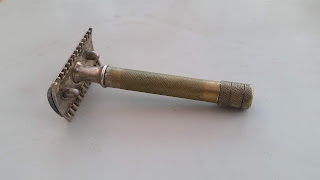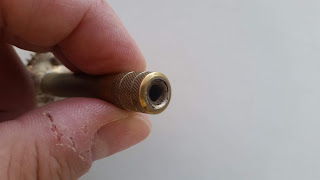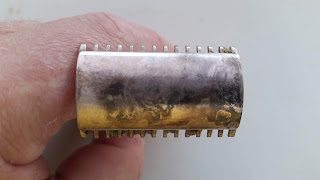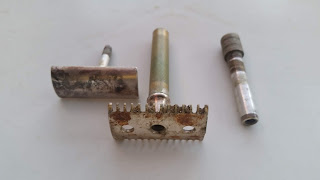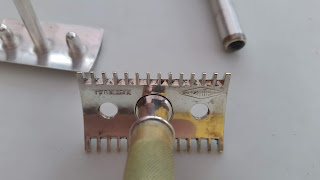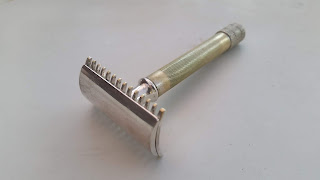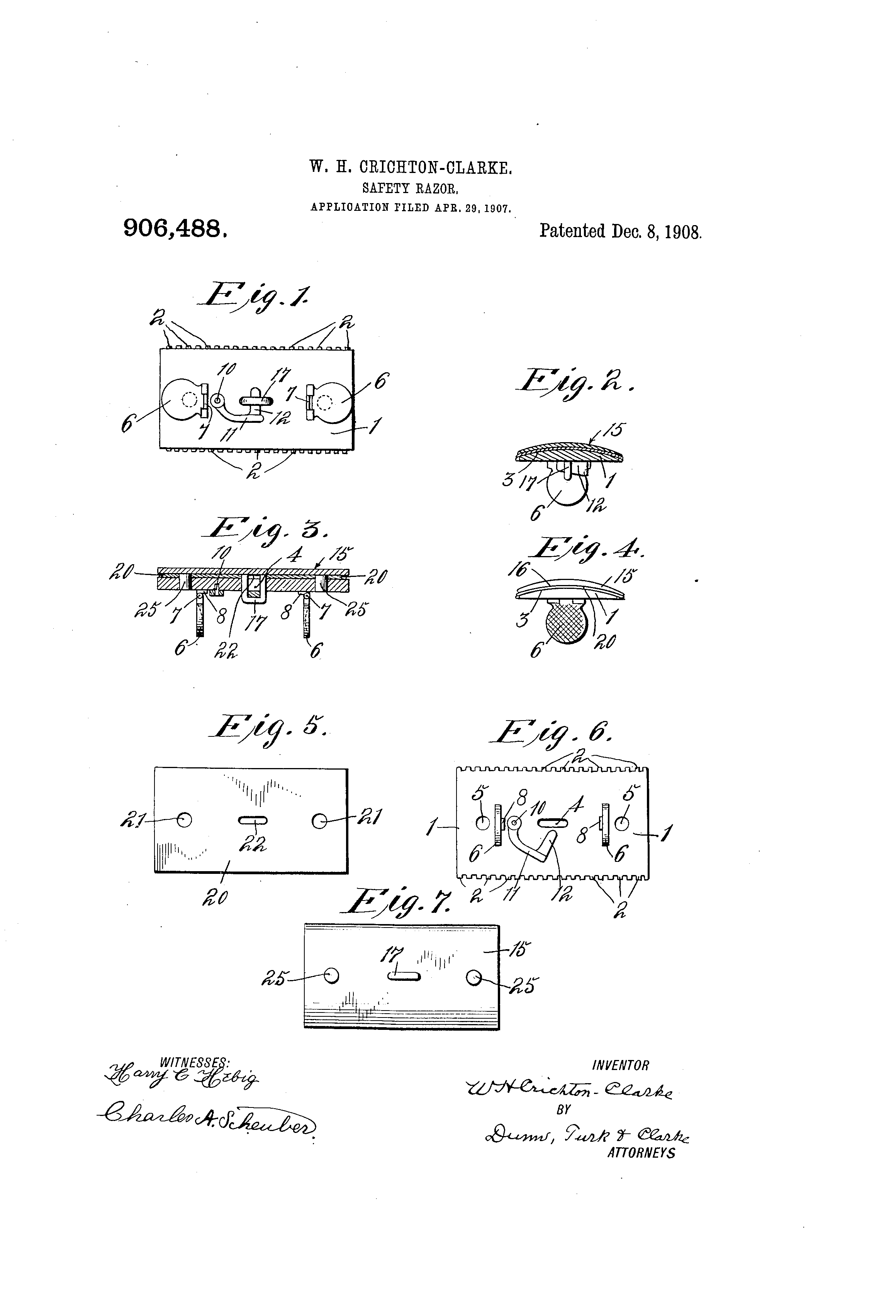One of the things I love about poking around on the web is when I find something previously unknown to me; such as the British Clemak Safety Razor from before the Great War, in production until at least the early 1920’s, and quite possible beyond that.
Robert K Waits described the Clemak in his compendium as a single edged comb guard hoe type silver- or nickel-plated razor – much like the US GEM and EverReady razors – and states that it dates from 1908.
I do think that this advertisement is trying to push the idea that you could strop the Clemak once a week and have seven days of satisfying shaves. There are strong indications online that the Clemak used blades similar enough to the various GEMs and EverReady razors to be able to take a modern GEM blade – and the old style GEM blades were close enough to old wedge blades to take several rounds on the strop before wearing out.

Clemak was offered up – at least initially – as the cheaper and more British alternative to expensive safety razors, even if (as we’ll see later) it cost more than twice of the advertised five shilling if you wanted the full kit and kaboodle.
I figure we should go on a tangent right here for those less than familiar with old British coinage; one guinea was originally a gold coin worth one pound sterling, which was not minted after 1816. The name lived on and at the time of the Clemak it was referring to a value of one pound and one shilling – or about 21 shillings – which would be 1.05£ today (and keep in mind that the British resisted decimal currency because they figured it would be too complicated according to some of my sources). The guinea had an aristocratic overtone; professional fees and payment for land, horses, art, bespoke tailoring, furniture and other luxury items were often quoted in guineas – hence the question “Why pay a guinea?” – or in other words; why buy a luxery razor when the Clemak is just as good and affordable?

The images used in the advertisements points to the Clemak coming with an optional strop, as well as a selection of blades.
In 1908 the razor with seven blades cost 5 shilling (a little less than a quarter guinea), and if you wanted a dozen blades with your razor you would have to come up with 2 shilling 6 pence more. Which would point to a pack of blade contained five blades – which checks out since a pack of blade is mentioned as costing 2 shilling 6 pence.
If you wanted to go all out – the razor, a dozen blade, the stropping machine, and a hide strop – you would have to come up with 10 shilling 6 pence – or around 97GBP (135USD) when adjusted for inflation and the change to decimal currency. Not cheap by any means, but nowhere near the prices we have to pay for a high end razor today – and still just half of the one guinea they wonder why you should spend.
As British as Bulldogs and the British Army!
Like this:
Like Loading...





